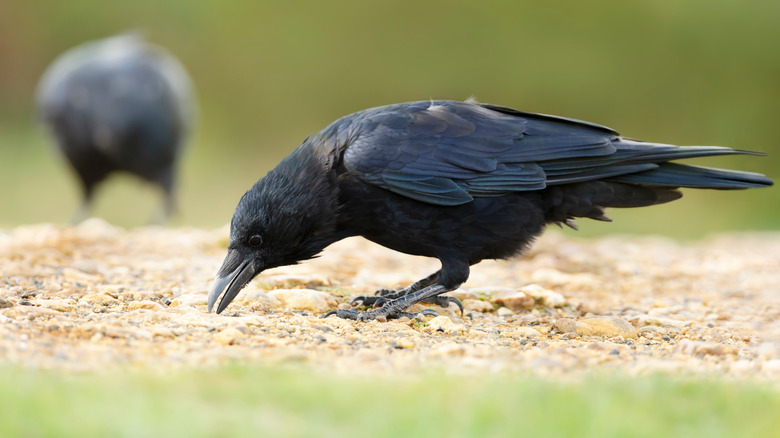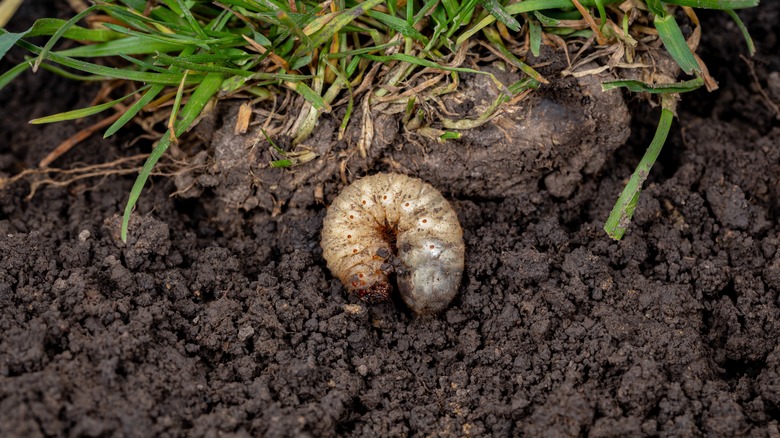If You See Crows On Your Lawn, You Probably Have This Serious Pest Problem
Crows on your lawn might indicate a grub infestation, as these birds are drawn to beetle larvae, which feed on grass roots and organic material in the soil. Grubs have the potential to severely damage your lawn as they feed on grass roots, leading to wilting, a noticeable brown color, and unattractive dead areas. In addition, various animals — including raccoons, skunks, possums, and crows — are attracted to grubs as a food source, resulting in additional harm as they dig through your lawn in search of this grub feast. The activity of grubs depletes the soil of nutrients, undermining the lawn's ability to flourish and maintain its vitality. Addressing a grub problem is therefore crucial not just for the health of your lawn but also to deter crows and other animals from causing additional damage.
Grubs pose a considerable threat to lawn health, but there are multiple strategies to mitigate their impact. Introducing natural predators — such as certain bird species, nematodes, and milky spore fungus — can help control grub populations by preying on them directly. Reducing your lawn's moisture levels can also deter grubs, which thrive in damp conditions. Allowing the lawn to dry for several weeks can create an inhospitable environment for them. Neem oil, a natural insecticide, can be applied to plants to disrupt beetle reproduction and larvae infestation. Alternatively, a homemade solution of borax and water can be used as a grub killer.
How to prevent grubs from invading your lawn
Taking preventive measures against grubs is crucial to maintaining the health and aesthetic appeal of your lawn. Ensuring your lawn is in top condition is a significant step toward this. Regular watering, maintaining optimal grass height, and appropriate fertilization contribute to a thriving lawn, thereby reducing the chances of a grub infestation. Additionally, applying preventive insecticides early in the growing season is an effective strategy for stopping grubs from hatching and developing.
Regularly scheduled treatments from professional lawn services can offer an extra layer of protection, keeping grubs at bay. Improving soil conditions through practices like dethatching and aeration can also create an environment less favorable to grubs by breaking up compacted soil and enhancing drainage. Managing the moisture level of your lawn is another vital aspect, as grubs rely on moisture to survive. By reducing the amount of water your lawn receives and allowing it to dry out for several weeks to a month, you can create conditions inhospitable to grubs, safeguarding your lawn from their destructive potential.

